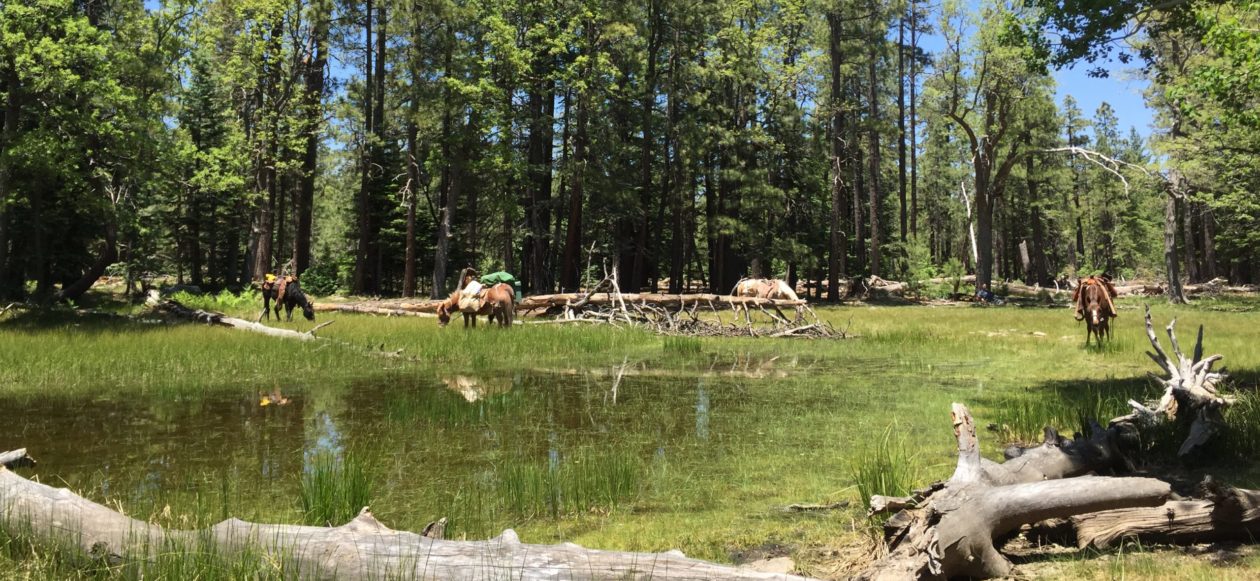In reading over some old posts on my blog about my pack trip from Eagar to Flagstaff, Arizona in 2016, I came across my post about a device charger I bought and realized I never made a report on our experience in using it on the pack trip.
So, here it is. I have linked the original post as well, for your reading pleasure.
http://westerntrailrider.com/blog/received-a-new-gadget-for-the-pack-trip-today/

The Mini Q is a device charger that operates by heating an element in the unit and converting that heat to electricity. Water is used as a heat sink to regulate the temperature. The device has a base of machined aluminum, inside which are installed the electronic parts that actually convert the heat energy to electricity. It has a heat-resistant siliconized, foldable sleeve, attached by a hose clamp to the base, which holds a bit more than two cups of water. The unit is placed on top of a heat source (camp fire not recommended), which heats the unit, thus generating heat, which is converted to electricity. The water simply regulates the heat and gives the user an indication of temperature. The device has a permanently attached heat-resistant cord with a USB female plug on the end, which extends just far enough to keep the plug end out damaging heat. A device may be attached to the unit via a USB cord with the appropriate mini charger plug on the device end.
I purchased the Mini Q, due to one particular incident that occurred on the pack trip in 2015, from the US/Mexico border to Eagar, Arizona. We had been traveling through a treed area and the weather had been rather cloudy, reducing the effectiveness of our solar chargers. Over the period of a couple days all our battery operated devices were exhausted except the DeLorme InReach Explorer GPS unit, and it was getting low. Our solar chargers were unable to keep up with our charging needs, due to clouds on the horizon in the mornings, when we got most of our charging done while we broke camp and packed up for each day’s travel.
As it turned out, we pulled the Mini Q out and gave it a go during a similar period on our trip in 2016, when our batteries were being exhausted faster than we could charge them. Here’s what we found.


First off, the unit is compact and durable. It comes with a zippered-closure vinyl case and packs to a nicely compact 1-1/2″ X 5″ diameter. It has no moving parts and the USB plug is attached permanently and extends far enough to keep your USB cable away from the heat. Once enclosed in the case, the unit can be dropped down into a panier or pack without much concern for it being damaged.
I read the instructions and made sure I used it exactly as it is intended to be used. Dad and I did all our cooking on a single-burner propane-powered coleman stove, which is what I used to heat the Mini Q. I used filtered water in the Mini Q, to keep residue to a minimum, although I am sure unfiltered water would be fine. In fact, the use of propane could be maximized by using the Mini Q to boil water for drinking as well. The silicon rubber is easy to clean.
I filled the unit from my canteen and brought the water to a slow boil and connected my iphone 6 to it, via a USB cable. Once the water started to boil, the green indicator light turned on and my iphone began to charge. I was disappointed to find, however, that within a few minutes the charging light went out and the phone ceased to charge. I tried adjusting the temperature higher and lower, each time finding the charging light would go out after just a few minutes. I was unable to get enough charging from the device to increase the battery charge in my iphone more than about two percent before it stopped charging. After working with the unit for about two hours, trying to get it to work as advertised, my iphone went from 40% to 37% charge, after which I stopped trying.

It appears the device has a very narrow temperature range within which it will operate. I was unable to keep it at a steady enough temperature on my single-burner stove to keep it charging. It is also possible my unit was defective. In the end, I found the amount of propane used, even while the device was actually charging, was disproportionate to the amount of electricity produced, and if the unit was not watched continually, a lot of propane was wasted. For our purposes, the propane was more precious than the electricity produced.

Had the Mini Q operated as advertised, it would have been a useful device for keeping a cell phone or other device alive in an emergency situation, however, I could not get it to function as advertised in a primitive camp environment. Additionally, the unit charged (when it actually worked) too slowly to offset the value of the propane required to heat it. For the price of over $90, including shipping, I cannot recommend it for pack trip use.
After the trip I forgot to contact the manufacturer, who is in Korea, so I have to admit I have not given the manufacturer the opportunity to address the issue. It has been nearly a year since I bought it, so it’s probably too late now.
So, my evaluation of the utility of the Mini Q for the purposes of horse packing is a “thumbs-down.”

The included USB LED light, however, works fine and uses little electricity. It comes in handy on occasion, if you have the battery power to support it.
Maybe your experience will be different. If so, feel free to post your comments.


You must be logged in to post a comment.